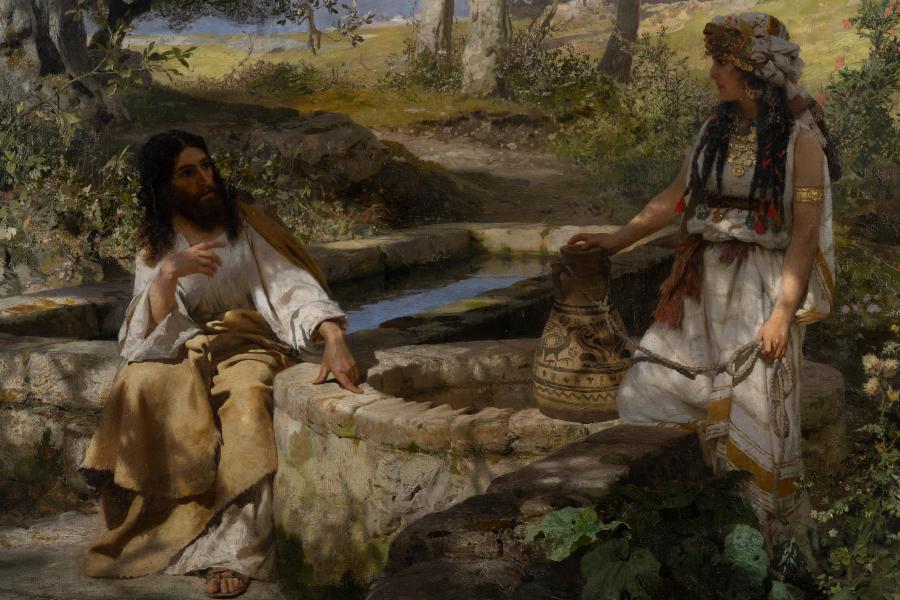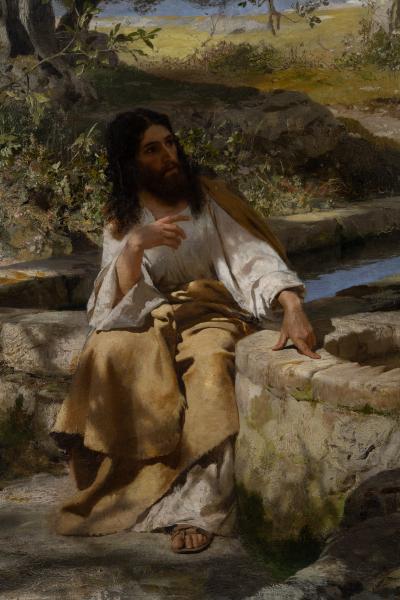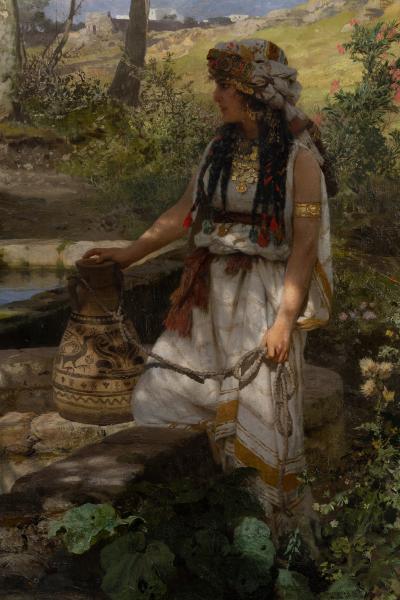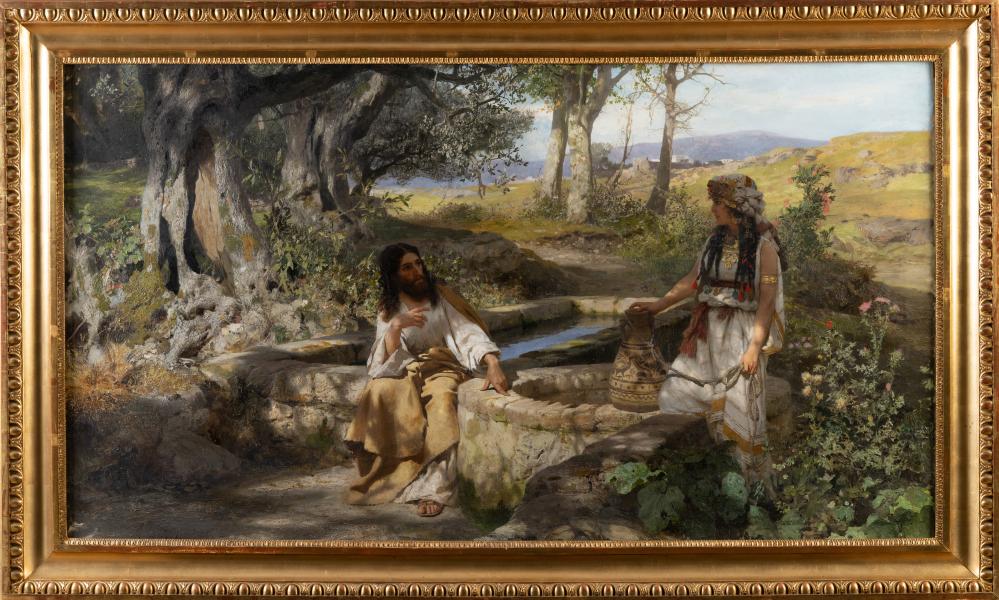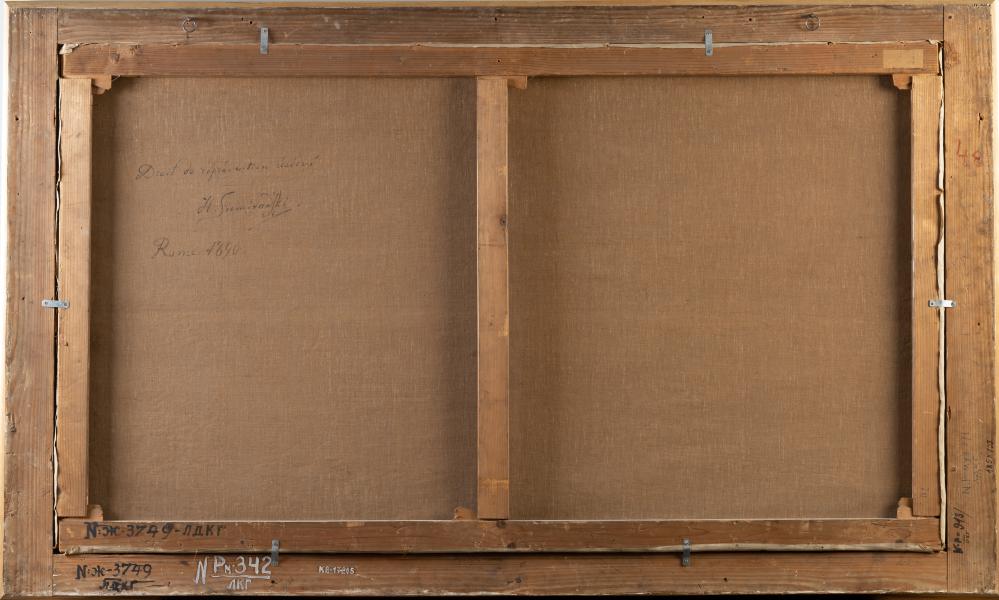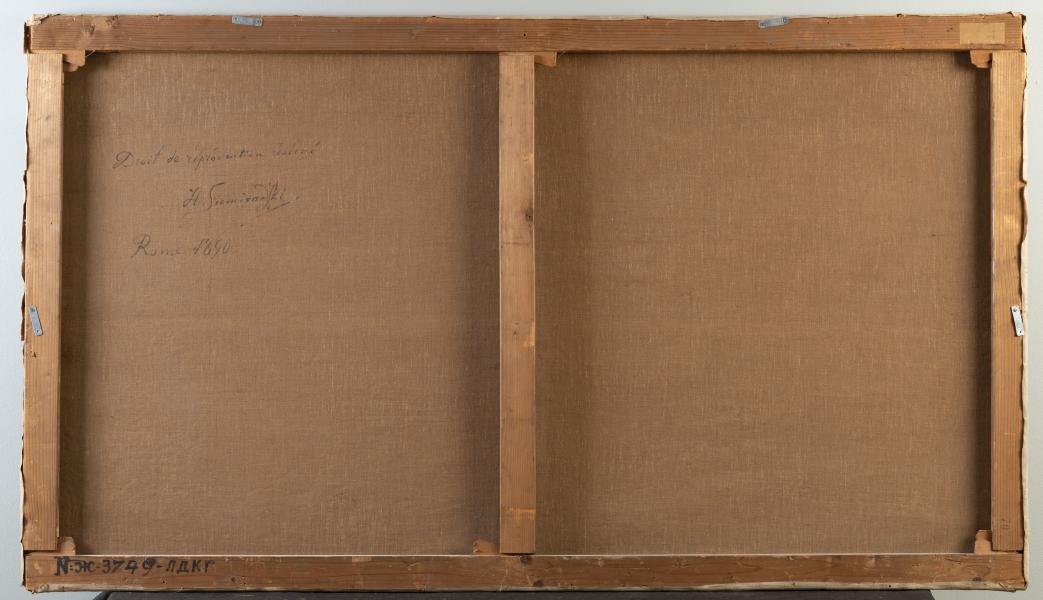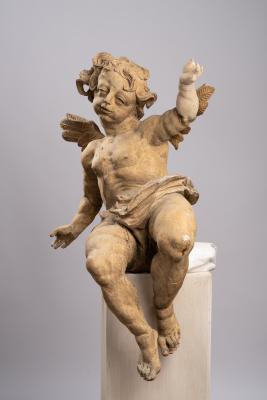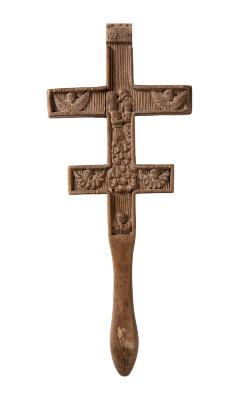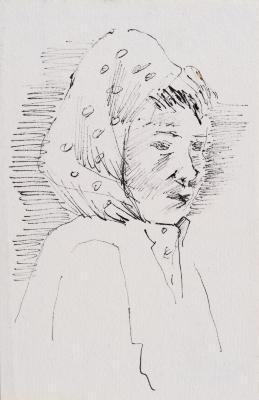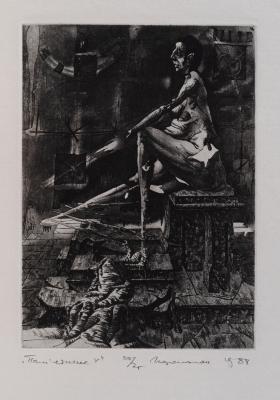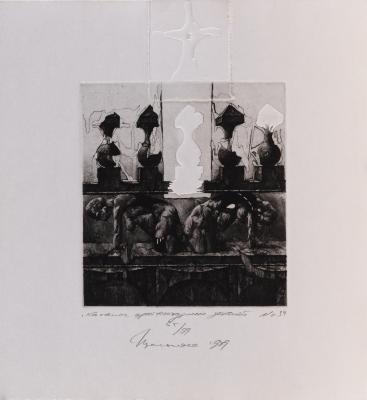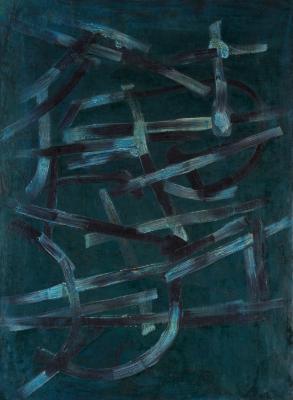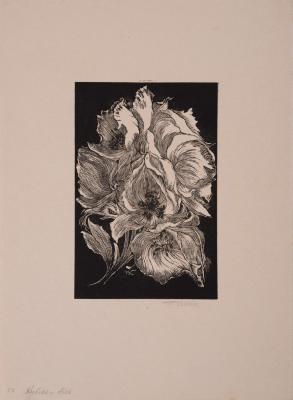Against the background of a sunny landscape (with broad-brimmed olive trees on the left and small hills on the right, with the outlines of a town in the distance) a scene of a conversation between Christ and a Samaritan woman is depicted. Jesus is a young man with shoulder-length dark hair and an elongated beard, wearing a light-coloured robe, sitting on the edge of a small waterhole and looking to the right. On the opposite side of the well (adjacent to the waterhole) stands a young woman looking intently at Christ. The Samaritan woman wears a headscarf (tied in the manner of an oriental headdress), revealing her dark hair in braids with colourful ribbons. The woman is dressed in light sleeveless clothing (with a red sash around her waist) and is wearing massive jewellery: earrings, a necklace, a shoulder bracelet (probably made of gold). She rests on the edge of the well with the right knee, where there is also a large painted jug (the woman holds it up with her right hand). The shade of the trees falls on the face of Jesus and the Samaritan woman, although the sun does shine on the centre of the work – the left hand of Christ, with which he points to the well.









